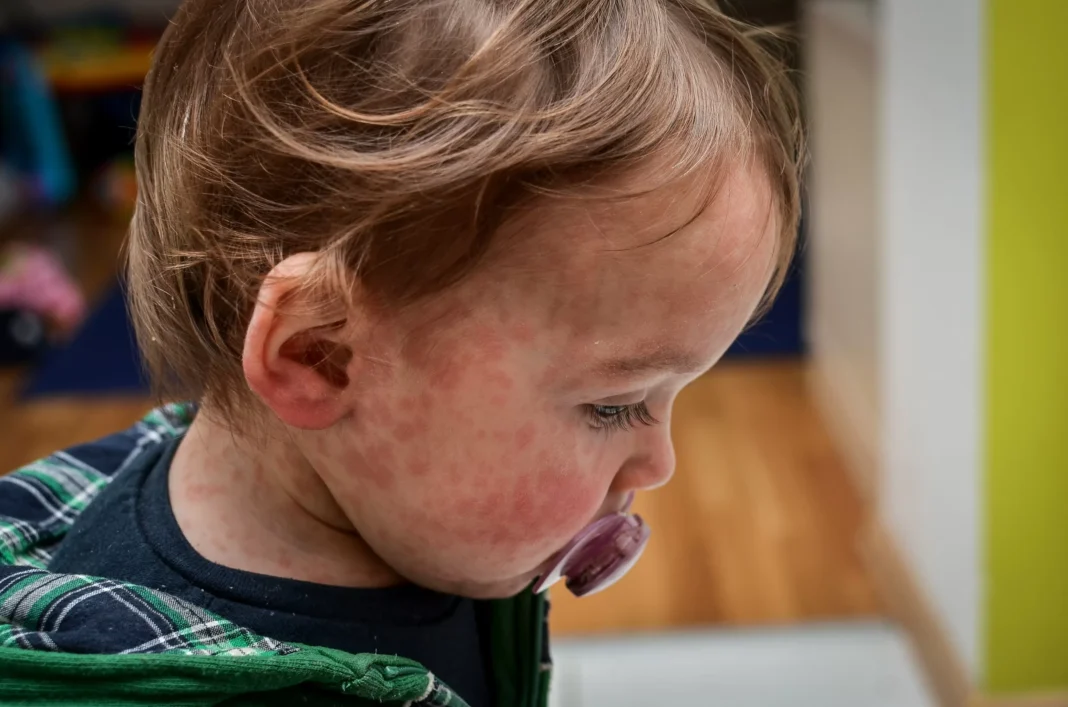When we think of measles, the first thing that comes to mind is the distinctive full-body rash that is associated with the highly contagious virus. However, there is another lesser-known but equally important sign that can indicate the presence of measles – Koplik spots.
According to Superdrug’s pharmacy superintendent Niamh McMillan, Koplik spots are white spots that can be found inside the mouth on the inner lining of the cheek. These spots may also appear on the back of the lips a few days later. McMillan adds that not everyone with measles will have these spots, and they usually last for a few days.
The recent data on measles cases in Europe over the past year has shown a considerable rise compared to the previous year, according to the European Centre for Disease Prevention and Control (ECDC). This indicates that the virus is circulating in the region, and the number of cases is expected to increase during the spring of 2025.
The United States is also facing an outbreak of the virus, with almost 500 reported cases in the state of Texas and the deaths of two children. In England, there have been 151 cases of measles detected since January 2025, according to data from UKHSA last updated on 13 March (almost a month ago). The cases were most prevalent in London, the South West, and Yorkshire and Humber.
So, what are the symptoms of measles? McMillan explains that measles typically begins with cold-like symptoms, making it difficult to distinguish from other common illnesses. These symptoms include a high temperature, runny or blocked nose, sneezing, a cough, and red, sore, watery eyes.
One symptom that can help differentiate measles from a cold is the appearance of Koplik spots, as mentioned above. And then there is the distinctive rash that usually appears a few days later. According to McMillan, this is the most typical symptom of measles, which starts on the face and spreads to the rest of the body. It usually appears three to five days after the first signs of symptoms and can last for several days. The rash can be flat or slightly raised and may join together into larger patches.
The NHS states that the rash can look brown or red on white skin and may be harder to see on brown and black skin. If you suspect your child has measles, it is essential to seek medical attention immediately. The NHS advises calling for an urgent GP appointment or speaking to NHS 111. As measles is highly contagious, it is best to call your GP first as they may request a telephone appointment to avoid spreading the virus to other people.
If your child is diagnosed with measles, they should stay off nursery or school for at least four days from when the rash appears. Prevention is always better than cure, and the best way to protect against this highly contagious disease is by having two doses of the measles, mumps, and rubella (MMR) vaccine. According to the ECDC, this is the safest and most effective way to protect against measles, and the vaccine is suitable for both adults and children.
Unfortunately, measles can cause a range of complications, from pneumonia to encephalitis and blindness. Adults, pregnant women, immunocompromised individuals, chronically ill people, malnourished children, and infants are at a higher risk of experiencing severe complications if they catch the virus.
In conclusion, it is crucial to be aware of the symptoms of measles and seek medical attention if you suspect you or your child has been infected. The best way to prevent measles is by getting vaccinated, and it is a safe and effective way to protect against the virus. Let us all do our part in preventing the spread of measles and keeping our communities healthy. For more information on measles, visit the NHS website.



